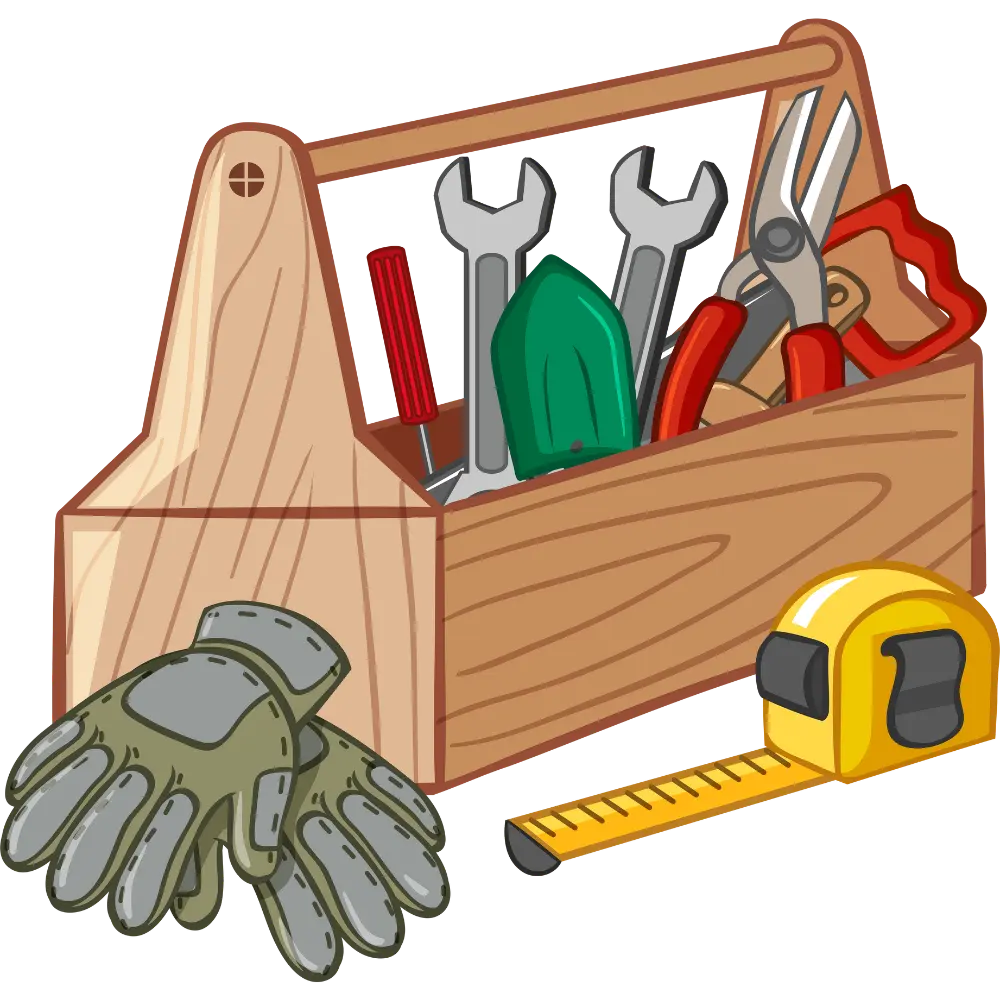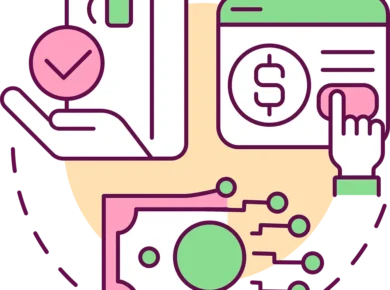A goal setting worksheet can be a game-changer for freelancers juggling multiple responsibilities—marketing services, handling invoices, and brainstorming new business ideas. With so many moving pieces, it’s easy to feel overwhelmed, spread too thin, or unsure where to focus your energy.
Unlike traditional employees who follow structured workflows, freelancers must create their own systems to stay productive. However, many struggle with consistency in goal achievement because of:
- Shifting Priorities: One month, landing new clients is the top priority; the next, it’s improving skills or building a personal brand. Without a clear plan, goals can get lost in the shuffle.
- Lack of Accountability: With no manager checking in, it’s tempting to put off long-term goals in favor of urgent tasks.
- Unrealistic Expectations: Many freelancers set broad, vague goals (“I want to make more money” or “I should network more”) without defining actionable steps.
This is where structured goal setting makes all the difference. A well-defined goal helps you prioritize your efforts and stay motivated. Using proven frameworks like SMART Goals and OKRs, you can turn aspirations into tangible achievements—scaling a business, landing higher-paying clients, or creating a sustainable work-life balance.
Ready to take control of your goals? Let’s break down the 5-step goal-setting worksheet to make success more structured and attainable.
The Power of Structured Goal Setting
Freelancers thrive on flexibility, but structure beats wishful thinking every time when it comes to achieving meaningful goals. It’s one thing to say, “I want to grow my business,” and another to have a clear roadmap detailing how you’ll do it and what exactly you want to achieve.
A structured approach to goal setting helps you:
✅ Break big goals into manageable steps.
✅ Stay accountable and focused.
✅ Track progress and adjust when needed.
The 5-Step Goal Setting Worksheet
The key to success isn’t just setting goals—it’s setting the right goals in a way that makes them achievable and trackable. That’s where the 5-Step Goal Setting Worksheet comes in. This simple yet powerful system ensures your goals are clear, measurable, and actionable.
📝 Step 1: Define Your Goal Clearly (Using SMART Criteria)
Your goal should be precise and actionable. To ensure this, use the SMART framework, which helps you define goals that are:
✅ Specific – What exactly do you want to accomplish?
✅ Measurable – How will you track progress?
✅ Achievable – Is this realistic, given your resources?
✅ Relevant – Does it align with your long-term vision?
✅ Time-bound – What’s your deadline?
💡 Example
Instead of saying, “I want more clients,” refine it to:
“I will gain three new clients in the next 60 days by networking and pitching my services to at least five leads weekly.”
📊 Step 2: Set Key Results & Milestones (Using OKRs)
Once your goal is clear, the next step is tracking progress. A great way to do this is by using the OKR approach (Objectives and Key Results):
- Objective: The big-picture goal you want to achieve.
- Key Results: The measurable milestones that define success.
💡 Example
If your goal is to increase social media engagement, your worksheet might include:
- Objective: Build an engaged audience on Instagram.
- Key Result 1: Gain 1,000 new followers in 3 months.
- Key Result 2: Increase post engagement by 20%.
- Key Result 3: Publish two LinkedIn articles per month.
By defining milestones, you stay motivated and can measure success at every stage rather than just at the finish line.
⚠️ Step 3: Identify Challenges & Solutions
Every goal comes with obstacles. The key is to anticipate challenges and prepare solutions in advance so they don’t derail progress.
🔍 Common Challenges & Solutions:
- Procrastination → Use time-blocking techniques to stay on schedule.
- Lack of skills → Dedicate time to online learning or mentoring.
- Distractions → Set up a distraction-free workspace and use focus apps.
💡 Example
If you struggle with consistency, use an accountability partner or tracking tool to stay on course.
🛠 Step 4: Plan Actionable Steps
You can reach big goals through small, consistent steps. Break your goal into weekly or daily tasks to create a structured workflow.
💡 Example
If your goal is to publish a blog, your tasks might look like this:
- Day 1-2: Research and outline the topic.
- Day 3-4: Write the first draft.
- Day 5: Edit and proofread.
- Day 6: Format and schedule for publishing.
- Day 7: Promote on social media.
📅 Step 5: Track Progress & Adjust
Success isn’t just about setting goals—it’s about reviewing and adjusting based on progress.
✅ Check in regularly (weekly or monthly) to review milestones.
✅ Identify what’s working and what’s not.
✅ Make necessary adjustments if you don’t meet key results.
💡 Example
If after one month, your goal of gaining 1,000 followers isn’t progressing, you might adjust by increasing content frequency or experimenting with different platforms.
Pitfalls & Roadblocks (and How to Overcome Them)
Even with a well-structured goal-setting worksheet, challenges can arise. Recognizing common pitfalls and how to overcome them will keep you on track.
Setting Unrealistic Goals
💡 The Problem: If your goals are too ambitious or lack a realistic timeline, you may feel overwhelmed and lose motivation.
✅ Solution: Set challenging but achievable goals. If a goal feels too big, break it down into smaller milestones. Example: Instead of “Earn $10K per month as a freelancer in 3 months,” start with “Increase my monthly income by 20% over the next quarter.”
Lack of Motivation
💡 The Problem: Long-term goals can feel distant, leading to a loss of enthusiasm.
✅ Solution: Keep yourself engaged by using:
- Visual progress trackers (Kanban boards, habit-tracking apps).
- Accountability partners (someone to check in with weekly).
- Small rewards for reaching milestones (celebrate wins to stay motivated).
Not Reviewing Progress
💡 The Problem: If you don’t check in regularly, you might lose sight of your progress or miss opportunities for course correction.
✅ Solution: Set calendar reminders for weekly or monthly check-ins. Ask yourself:
- What progress have I made?
- What obstacles have I faced?
- Do I need to adjust my approach?
Use your goal-setting worksheet as a living document—update it as needed!
Getting Stuck in Planning Mode
💡 The Problem: Over-planning can lead to analysis paralysis, where you spend too much time refining your plan instead of taking action.
✅ Solution: Follow the 80/20 rule—spend 20% planning and 80% executing.
Losing Focus Due to Distractions
💡 The Problem: Social media, emails, and unexpected tasks can distract you from your goals.
✅ Solution: Set dedicated focus time for goal-related tasks:
- Use time-blocking techniques.
- Turn off notifications during work sessions.
- Batch similar tasks together to stay efficient.
Fear of Failure
💡 The Problem: Fear of not succeeding can cause procrastination or avoidance of challenging tasks.
✅ Solution: Reframe failure as a learning opportunity. Ask:
- What did I learn from this setback?
- How can I improve next time?
Adopt a growth mindset, where every challenge is a step toward success.
The key to overcoming roadblocks is awareness and adaptability. By recognizing these common pitfalls and applying simple fixes, you’ll stay motivated, focused, and on course to achieving your goals!
Achiever’s Toolbox
Having the right tools and resources can make goal-setting easier and more effective. Here are some must-have resources to help you stay focused and organized:
Downloadable Goal Setting Worksheet

Get the 5-Step Goal Setting Worksheet.
Use this template to define, track, and achieve your goals.
Recommended Tools for Goal Tracking
Keeping your goals organized is easier with the right digital tools. Here are a few that freelancers and entrepreneurs love:
- PlanArty – A productivity and time management tool designed for freelancers, offering goal tracking, scheduling, and financial planning in one platform.
- Trello – Organize tasks visually with customizable boards.
- Notion – An all-in-one workspace for planning, tracking, and note-taking.
- Asana – Ideal for breaking down goals into actionable tasks with deadlines.
- Toggl Track – A time-tracking tool to measure productivity and ensure you’re staying on task.
Further Reading for Success
Boost your productivity and motivation with these insightful reads:
📖 Atomic Habits by James Clear – Learn powerful habit-building techniques to make consistent progress.
📖 Overcome Freelancing Challenges by Istvan Meszaros – A recommended guide to tackling freelancers’ biggest struggles and creating a sustainable, successful career.
📖 The 12-Week Year by Brian P. Moran & Michael Lennington – A strategic approach to achieving more in 12 weeks than most do in a year.
Join the Discussion

Goal setting is a personal journey, and what works best varies from freelancer to freelancer. Now, we’d love to hear from you!
What’s your experience with goal setting?
- Have you ever struggled with achieving a goal? How did you overcome it?
- What tools or strategies have helped you stay on track?
- What pitfalls have you encountered while working toward your goals? How did you deal with them?
Share it in the comments below or PlanArty’s Facebook group. By connecting and supporting each other, we can all grow stronger as freelancers!
Key Takeaways
Here’s a quick recap of what we covered to help you apply these strategies effectively:
- Structured goal setting increases success rates—clear goals lead to better focus and motivation.
- The 5-Step Goal Setting Worksheet simplifies the process with SMART Goals and OKRs for clarity and measurable progress.
- Common pitfalls (like unrealistic goals, lack of motivation, and not reviewing progress) can be avoided with simple strategies like tracking milestones and using accountability tools.
- Practical tools like PlanArty, Trello, Notion, and Asana help freelancers stay organized and on track.
- Resources like Atomic Habits and Overcome Freelancing Challenges offer deeper insights into habit-building and freelancing success.






